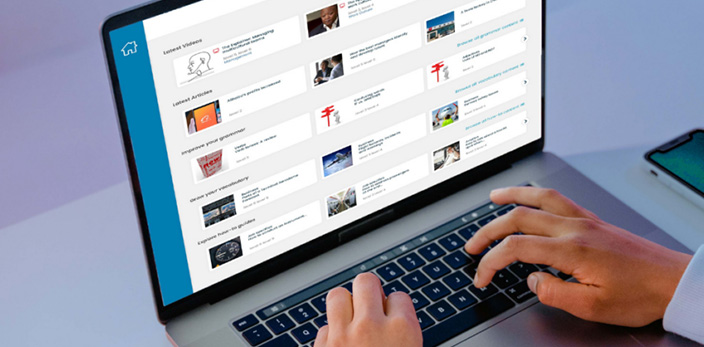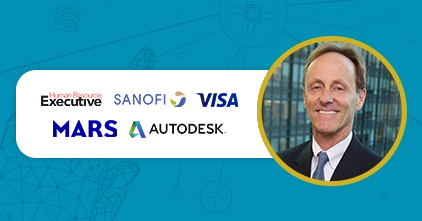Andragogy in training and development isn’t an entirely new concept in L&D, but it’s always great to revisit it. This is because improving your employees’ learning experiences also enhances their overall employee experience. According to the eLearning Industry, organizations with strong learning cultures increase their retention rates by around 30-50%.
And that’s why providing engaging training environments to employees is a must! Keep in mind that all your learners are adults, and as you may know, adults learn differently from children. This is actually the main point of andragogy.

Just a refresher, andragogy refers to the principles and concepts behind the learning of adults, and it’s also often called the Adult Learning Theory. This is key to creating meaningful learning experiences that eventually improves the experience of employees in today’s digital learning era.
Here’s the big question — Why is andragogy important in L&D and how can you apply it in your organization’s training and development? Without further ado, here are the benefits of andragogy in training and development and practical tips on how you can practice them:
Promotes flexibility and independence in learning
One of the most important ideas behind andragogy is that adult learners usually want to take ownership of their own learning journeys. While this might not be true for everyone and every company, this concept still applies to professionals who need more flexibility in their training.
For example, employees who are always on-the-go or in the field require other modes of training. They should be able to learn whenever and wherever they are and at the pace they can manage, given their busy schedules. Applying andragogy in L&D can make your learners make more sense of the direction of their own learning depending on their own needs and goals.
Putting andragogy in training and development in mind, you can promote more learning independence for your employees. They can see training not only as a requirement, but a legitimate opportunity for upskilling.
How to apply in L&D: Provide self-directed learning options, but don’t forget guided instruction.
Ensure that your learners have the chance to learn on their own, decide when they need it, and choose how they want to learn. Having self-directed learning options allows your employees to fully exercise their independence and ownership of their own learning experience.
Although this is the case, you also have to be aware of a huge problem in adult learning. Because adults were conditioned to be dependent and guided during their previous school experiences (in elementary school and high school), they don’t get to become active participants in their own learning instantly. This implies two things:
- Adults don’t necessarily know how to become active self-directed learners at first.
- Learner engagement can be low among adult learners.
To address this challenge, start by letting your learners know the practical benefits of the training. Allow them to suggest ways on how they want to learn. The key here is to include your learners’ suggestions and communicate with them every step of the way. Then, provide lessons in different learning modalities — articles, videos, guided lessons, etc. You can also let them access on-demand learning content within your LMS/LXP which they can consume whenever they need it the most. Self-paced learning content can act as supplementary learning resources for their instructor-led training, at first.
As an example, if your learner is studying Spanish for business, give them options on how they choose to learn. Aside from their one-on-one lessons with a professional language instructor, you can also provide them with learning content suggestions that they can consume in their own time.
Guiding your adult learners and encouraging them to take learning into their own hands isn’t an easy feat. But giving as many options for learners is a great way to address this issue. Importantly, every lesson should answer the question Why should I learn this? (which is connected to the next point of this article).
Ultimately, giving your employees opportunities to learn on their own, when done appropriately, can lead to higher relevance and eventually, better engagement and experience.

Provides readily applicable lessons
In Adult Learning Theory, the experiences of the learner is put into consideration when it comes to the mode of teaching and learning. As an L&D leader, you have to keep in mind that your learners have a wealth of experiences, depending on their backgrounds, lifestyles, age, and other factors. These will affect their perception of learning as well as their behaviors and attitudes towards it.
Andragogy also tells us that learning is internally-motivated. This means that employees, for example, want to develop their skills to move up the career ladder or be qualified for a project they want to pursue. With andragogy in L&D, employees can easily connect their specific training programs with the goals of their respective job roles.
When your employees realize that training directly addresses their daily challenges at work, their engagement into the training and your organization will definitely increase. Additionally, knowing that adult learners already have enough context and experience can also help you in the design, content, and delivery of your training courses as well. Well-designed training can make the learning experience more motivating for your employees.
How to apply in L&D: Offer training based on real-world experiences.
In your L&D programs, include lessons related to real-life situations. For instance, if your learner is building English language skills, it’s best that lessons in grammar and vocabulary include examples based on business and social contexts.
You can do this by offering business-focused and industry-specific lessons and content within your LMS, LXP, or any learning system. With this, your learners can easily see the practical applications of their training. This then can motivate them further not only to comply but also to build knowledge and skills on their own. When they see that training is relevant to them, they’ll be internally motivated to learn based on their needs and with the goal to grow professionally.
For example, one of your sales managers who handles a diverse team requires English language lessons that directly relate to their everyday tasks at work — handling meetings, negotiations, project management.
In this situation, the learner needs to see that their language training is directly applicable to their work. The lessons should address the context and nature of their job role, work environment, and industry. This way, they can easily connect the lessons from training and the reality they face while working with their colleagues and clients.

Focuses on quick and problem-centered learning
One common thing about employees is that they’re all busy adults. They might be too preoccupied with work to spend the bulk of their time in training. So either they want to gain knowledge on the job or spend less time in training.
More often than not, they need training whenever there is a problem or task to be solved or done. For instance, one of your salespeople wants to get to know how to handle their meeting with Spanish clients and needs to learn the common Spanish phrases used in business.
With andragogy in training and development in mind, the courses and content you provide to your learners become more relevant based on the problems they’re trying to solve. Lessons are delivered in quick and bite-sized pieces so that training is short yet relevant.
How to apply in L&D: Have microlearning activities and lessons readily available.
Microlearning isn’t only great in providing useful information in a short period of time. But it’s also a great way to accommodate human beings’ shortening attention spans. Lessons, which are usually in video format, shouldn’t be longer than 6 minutes. Content must be straightforward, easy-to-digest, and doesn’t divert away from the main topic.
If the microlearning content is about how to use gender-sensitive language in the workplace, the learning content should just discuss that specifically and shouldn’t include best practices in multicultural communication, for example.
Aside from this, adult learners also want (and need) to solve problems. And this rings true especially in workplaces. So microlearning content should also directly present solutions on how your employees can address their challenges at work.
For example, the goFLUENT Corporate Language Academy includes microlearning content focused on various topics in different industries and business-focused content such as English for Banking and Finance, English for Native English Speakers, How to make virtual meetings feel more real, and many more. This way, business professionals learning a new language have the opportunity to gain quick language tips whenever convenient to them and in their different points of need.
You can do the same in your L&D! Just make sure that you provide learners with short bursts of learning resources that aren’t only attention-grabbing but also directly applicable to what they are currently experiencing on the job.

Conclusion
The bottom line is that andragogy in training and development is crucial to revisit especially for L&D leaders and HR professionals who administer and design training programs. This affects different aspects of employee training — from design and execution to learner engagement. As a result, providing great training experience to learners can ultimately lead to a better employee experience as well.



